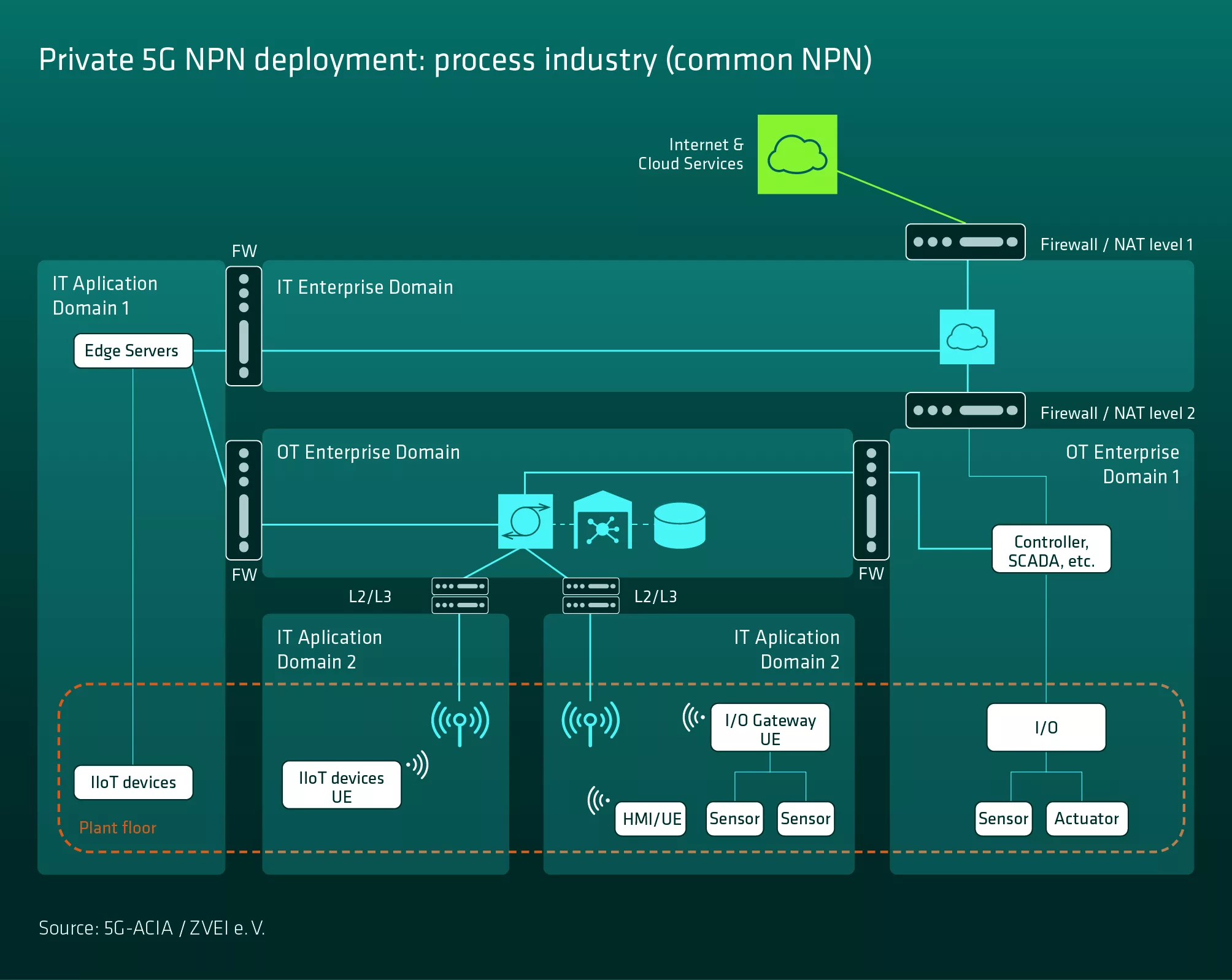Continuing the work begun by 5G-ACIA when it published the first white paper on this subject, this paper looks more closely at some examples of actual NPN deployments for use cases in industrial scenarios. It begins by describing a small but representative set of industrial scenarios based on input received from OT companies, as the basis for presenting NPN deployment examples. This set is not exhaustive; many other use cases and combinations of them are also valid and possible. The example NPN deployments are based on 3GPP standards and include options contributed by ICT companies. Finally, the available alternatives are analyzed and an overview of aspects that could affect the choice of NPN deployment options for each scenario is provided.
Discussion about NPNs has been around options that follow 3GPP standards, and what capabilities they imply. That is only part of the story. 3GPP only defines logical architecture, deployment architectures are based on solutions that are made available to the marketplace. A wide range of suitable options is available, including those based on both SNPN and PNI-NPN standards.
The use example industrial operation scenarios we looked at are facilities that run discrete manufacturing and process automation or a combination of both in an industrial park. Use cases that would benefit from 5G communication include flexible assembly lines including manual assembly, connected mobile workers with HMI as well as COBOTs, AGVs and mobile inspection robots. Each of them are connected to the industrial network, where 5G becomes an integral part.

All use cases we examine include one facility located in geographically distinct area and includes use cases that demand low latencies. In these cases, a 5G NPN where all communication elements are deployed locally on-premises is recommended.
The whitepaper shows examples of 5G NPN deployment with reference to the industrial network.

5G implemented for an industrial enterprise needs to support the use cases that use it, and the industrial enterprise must have the controls over it that they need for the daily operation. How this control is realized varies in different solutions, and the type that best fits the needs can be chosen. Additional considerations include whether logical or physical separation of network domains are needed, how connections to other networks are to be treated, and if access to spectrum facilities is available directly or through other players.
This white paper discusses examples of NPN deployments for three different types of industrial operation scenarios: a manufacturing building, a large-scale process industry scenario, and an industrial park containing a number of enterprises of the two previous types. First these example industrial operation scenarios are described in terms of which use cases could use 5G communication, the layout of these facilities, and how the industrial network could be arranged within them in a typical scenario. Applying the domains in the industrial network diagrams as a reference, this paper shows how the network functions of the 5G NPN could be deployed to support the use cases. Finally, several aspects that are likely to affect which NPN deployment option is chosen for each scenario are described and analyzed. The conclusion is drawn that many possible alternatives exist and the differences between them may not be very large in terms of technical performance. There are also other important considerations relating to how different types of NPNs are operated, and the recommendation is therefore made to carefully consider the requirements that each industrial enterprise needs them to meet.

Do you want to learn more about this future-oriented topic? Please download or share the 5G-ACIA white paper as a PDF file.